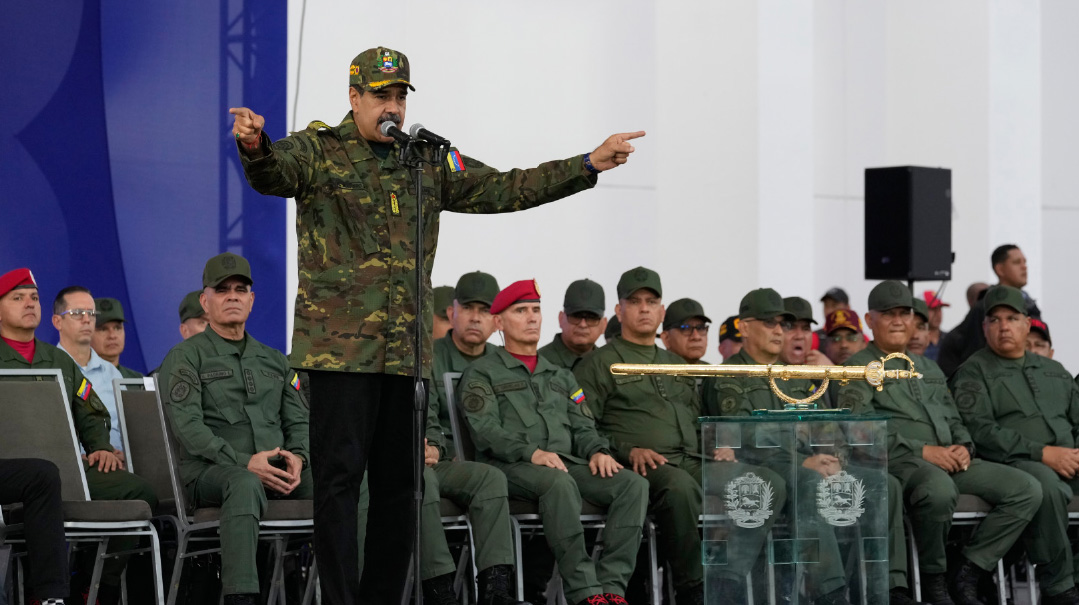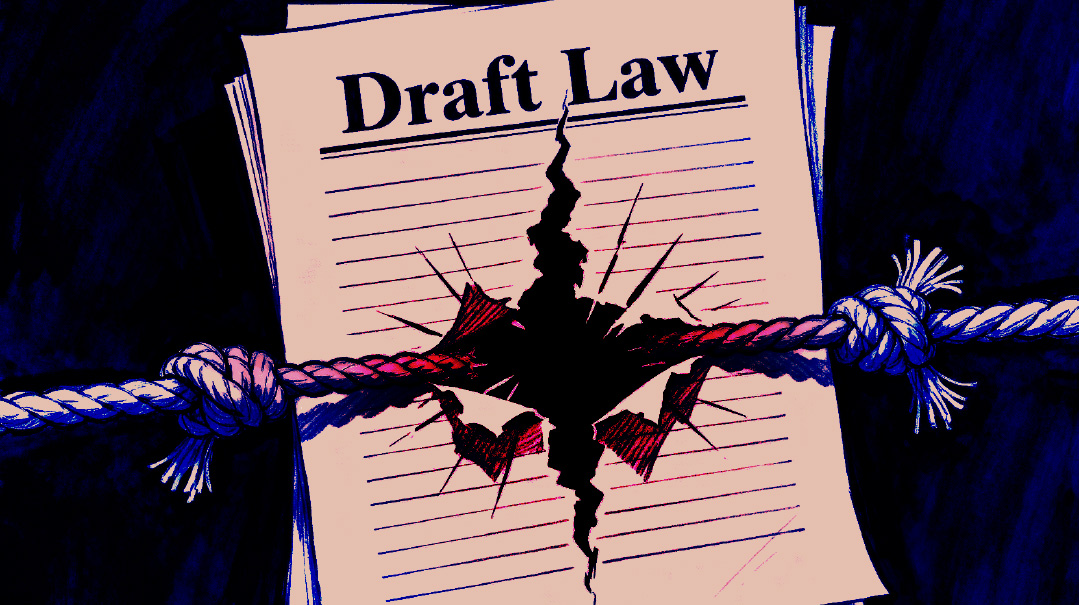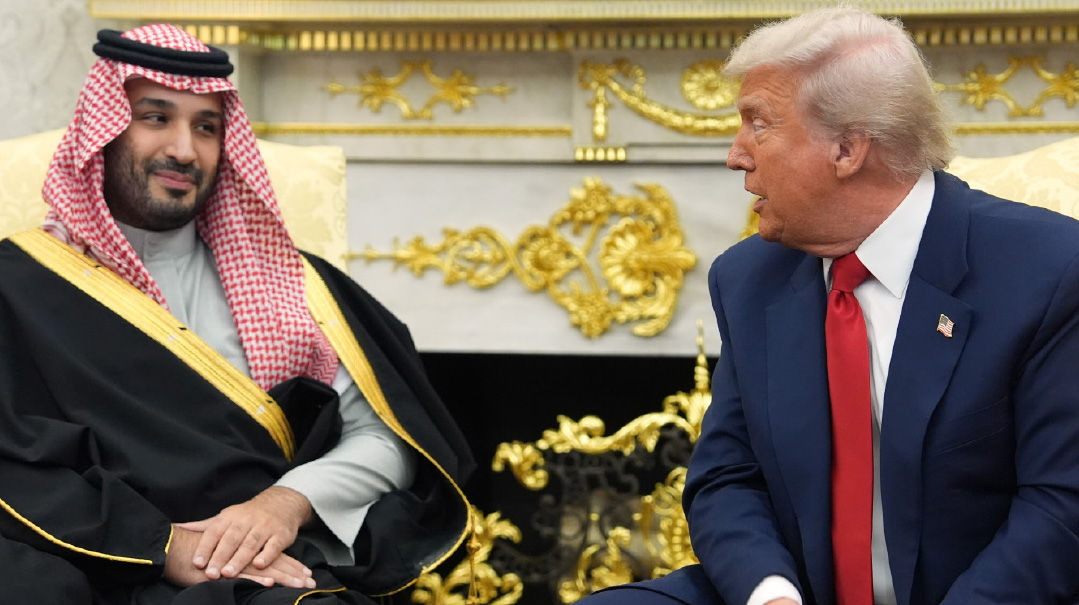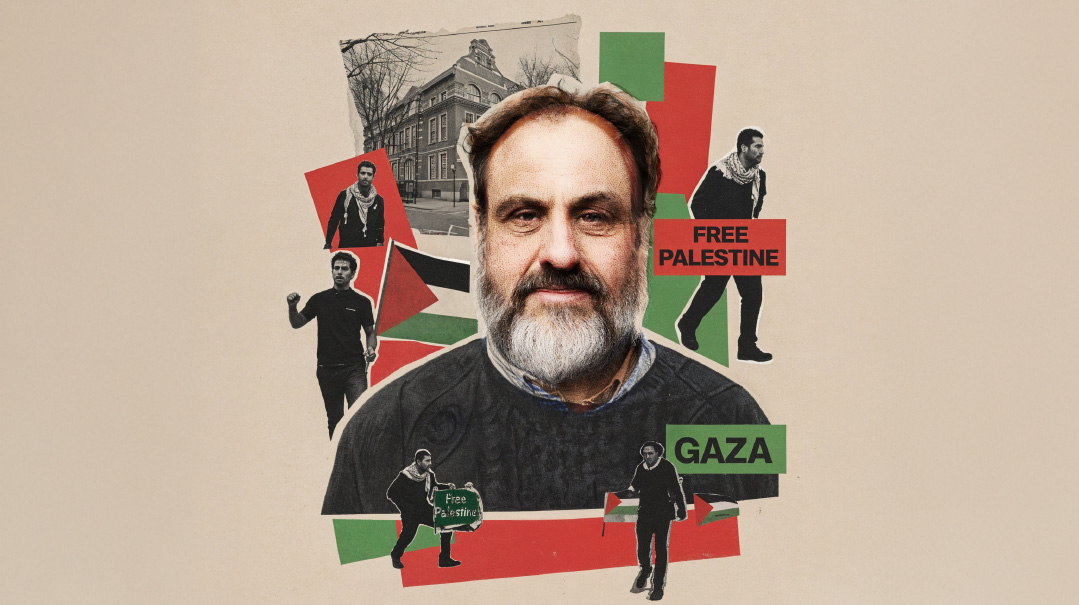Northern Menace

Hezbollah began in the early 1980s as a small militant group, and has grown into the most powerful non-state army in the world
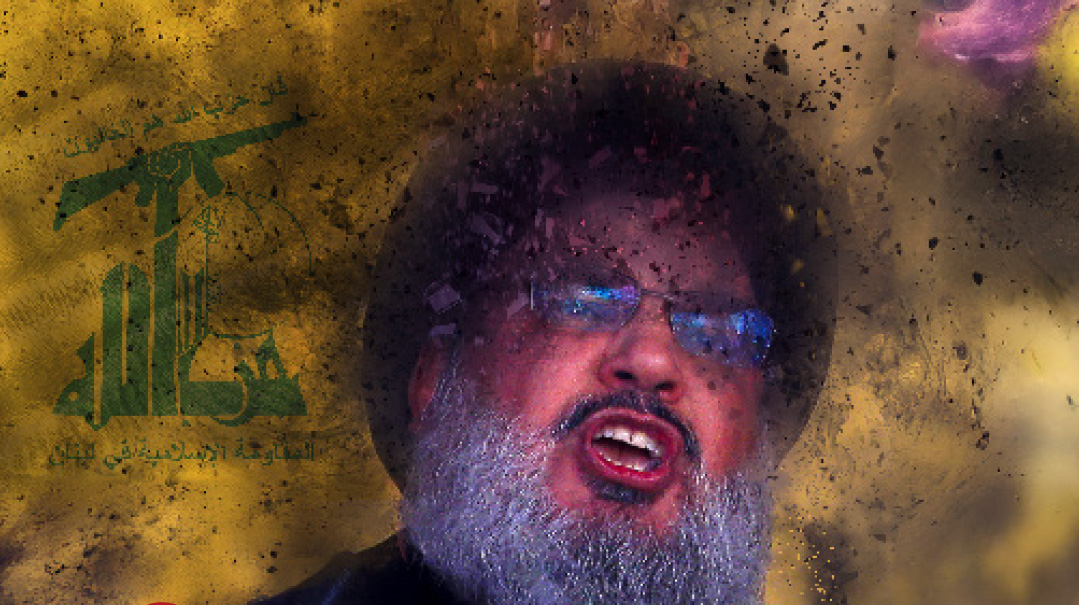
For nearly half a century, the Hezbollah terrorist organization in Lebanon has been one of Israel’s most formidable foes. What began in the early 1980s as a small militant group has now grown into the most powerful non-state army in the world. This immense power is largely due to the billions of dollars in economic, military, and logistical support provided by Iran over the years. While it was long believed that Israel would avoid direct confrontation with Hezbollah, on September 27, the unthinkable occurred: An Israeli airstrike killed Hassan Nasrallah, ending his three-decade reign as Hezbollah’s leader.
Although it would be naive to assume that Nasrallah’s death spells Hezbollah’s demise, there has been an undeniable impact. As evidence, Iran — which had previously managed to stay on the sidelines by waging its war against Israel through proxies — has now itself been forced to intervene directly, despite the likelihood that it will face serious repercussions.
Hezbollah is wounded, but far from defeated. The terrorist organization has suffered blows throughout its history, and its proximity to Israel suggests that it will continue to pose a lingering threat.
To understand Hezbollah’s strength, its evolution into a force more powerful than the Lebanese army itself, and the trajectory it might take in the future, we take a tour through its history.
The 1980s: A Seed Is Planted
In 1975, Lebanon erupted into a civil war that would rage for 15 years. On one side were the Christian and Sunni factions; on the other, in the south — bordering Israel — were the Shiites. When the Islamic Revolution swept Iran in 1979, Lebanon’s Shiites were inspired and found a leader to emulate in the Ayatollah. Small groups of Shiite extremists managed to secure Iranian training and financial backing. That was the seed from which Hezbollah would emerge.
1982
June 6: After a Palestinian paramilitary group attempts to assassinate Shlomo Argov, Israel’s ambassador to the UK, and the Palestine Liberation Organization (PLO) launches numerous attacks on Israel from southern Lebanon, the First Lebanon War begins. Israel’s invasion spurs young Shiite Lebanese to form hostile paramilitary forces with Iranian backing. Among the early members are Abbas al-Musawi of the Islamic Dawa Party, and Hassan Nasrallah, then part of the Lebanese political movement Amal.
November 11: Hezbollah conducts its first major suicide attack by detonating a car bomb against the Israeli administrative building in the Lebanese city of Tyre, a town close to the border that the IDF had chosen as a base of operations. Seventy-five Israelis are killed, including security personnel, along with about 25 detained Lebanese and Palestinians.
1983
April 18: A Hezbollah suicide bomber crashes a truck loaded with over 2,000 pounds of explosives into the US embassy in Beirut. The attack brings significant international attention to Hezbollah and kills 63 people: 32 Lebanese employees, 17 Americans, and 14 bystanders.
October 4: Another suicide attack targets UNRWA offices in Tyre, killing 29 Israeli soldiers.
October 23: Hezbollah carries out the “Beirut Barracks Bombing,” a dual suicide attack involving two truck bombs that strike the headquarters of the Multinational Force in Lebanon (MNF), a military peacekeeping mission established in 1982 and composed of troops from the United States, Great Britain, France, and Italy. The MNF’s presence was intended to train and strengthen the Lebanese Armed Forces and bring stability to the country during the ongoing civil war. The attack claims the lives of 241 US Marines, 58 French paratroopers, and six Lebanese civilians, hastening the MNF’s withdrawal, which was finalized in 1984.
1984
March 16: Hezbollah kidnaps CIA Beirut bureau chief William Buckley, who would die in captivity in 1985.
July 10: Hezbollah begins a campaign of kidnappings against the Lebanese Jewish community. Eleven members of the small community are abducted, tortured, and eventually executed. None of them have any political or military ties to Israel, and all are Lebanese citizens. Only four bodies are ever recovered.
September 20: Another attack targets the relocated US embassy in eastern Beirut, killing 23 people, including two Americans.
1985
February 16: Hezbollah formally announces its existence with the publication of its “Open Letter,” the group’s foundational ideological document. It officially aligns itself with the teachings of Ayatollah Ruhollah Khomeini, Iran’s Supreme Leader, and the Islamic Republic, stating that it does not wish to become an independent movement but rather an extension of the Shiite Islamic movement led by Iran.
April 12: Hezbollah bombs a restaurant near a US military base in Torrejon, Spain, killing 18 US servicemen and injuring 83.
1986
February 16: Hezbollah kidnaps two Israeli soldiers in Bint Jbeil, sparking a six-day unsuccessful retaliatory raid by the IDF to recover its servicemen.
1987
February 17: Hezbollah kidnaps Colonel William Higgins of the US Marines while he serves as a UN peacekeeper in southern Lebanon. He would be executed in 1989.
1989
October 22: The Taif Agreement is signed in the city of Taif, Saudi Arabia, ending Lebanon’s civil war, which has claimed over 100,000 lives. The agreement calls for the disarmament of all Lebanese militias except Hezbollah. This exemption is likely granted because Hezbollah holds many Western hostages. Syria, Lebanon’s new hegemon, allows Hezbollah to retain its arms as an officially sanctioned resistance group. Israel still controls a security zone in the south.
November 11: Hezbollah’s Shura Council elects its first secretary-general, Subhi Tufaili, one of the organization’s founders. Over the years, Tufaili’s faction, which seeks more independence from Iranian hegemony and takes a more aggressive stance, clashes with the faction led by Hassan Nasrallah, who seeks to build political power in Lebanon through consensus. Tufaili would be expelled from Hezbollah in 1998.
The 1990s: Nasrallah Rises to Power
In the 1990s, Hassan Nasrallah would assume Hezbollah’s leadership, a position he would hold until his death. Nasrallah would deepen Hezbollah’s involvement in Lebanon’s internal politics, cementing the group’s role as a pivotal player in the country’s government.
1991
May 22: Hezbollah holds its second conclave, adopting a pragmatic policy of infitah (“opening up”). This reflects a willingness to work within Lebanon’s political system while gradually attaining its goal of transforming the country into an Islamic theocracy modeled on Iran. Tufaili is replaced by the more pragmatic Abbas al-Musawi as secretary-general.
1992
February 16: Israeli Apache helicopters fire missiles at al-Musawi’s motorcade in Nabatiyeh, killing him, his wife, his five-year-old son, and four others.
February 17: Hezbollah’s Shura Council unanimously elects Hassan Nasrallah, 32, as secretary-general. Nasrallah had joined the Amal militia at 15, but later aligned himself with a faction that split from the group in 1982 and eventually became Hezbollah. Rising through the ranks, he went from being a fighter to director of operations in the city of Baalbek, then over the entire Bekaa Valley region, before assuming command in Beirut. He would hold this position until his death in 2024.
March 17: A Hezbollah car bomb destroys the Israeli embassy in Buenos Aires, Argentina, killing 29 people, including four Israeli embassy personnel. It is believed to have been in retaliation for al-Musawi’s assassination.
Early September: Hezbollah participates in Lebanon’s first parliamentary elections since 1972, winning 12 seats. Hezbollah becomes a central player in Lebanese politics, occupying key ministries in various administrations to this day.
1994
July 18: A Hezbollah suicide bomber strikes the AMIA Jewish Cultural Center in Buenos Aires, Argentina, killing 85 people, one of the bloodiest attacks in the Western Hemisphere.
1995
May 17: Iranian Supreme Leader Ayatollah Ali Khamenei appoints Hezbollah secretary-general Hassan Nasrallah as his religious deputy in Lebanon. This formalizes Hezbollah’s status as an Iranian proxy.
1996
April 11: Hezbollah launches over 150 Katyusha rockets into northern Israel in response to the IDF’s accidental killing of three Lebanese civilians, including a 16-year-old boy. In response, Israel launches “Operation Grapes of Wrath.” The operation lasted 17 days, but Israel fails to inflict significant damage on Hezbollah. A cease-fire is signed on April 27, which Hezbollah later violated.
1997
September 12: Hassan Nasrallah’s son Hadi is killed in an armed confrontation with Israeli soldiers in southern Lebanon. From then on, Nasrallah is also known as Abu Hadi, the “father of Hadi.”
October 8: The US State Department designates Hezbollah a foreign terrorist organization.
1999
February 28: Hezbollah assassinates IDF Brigadier General Erez Gerstein, commander of the IDF’s Lebanon Liaison Unit, by detonating an IED near his motorcade. Gerstein is the highest-ranking Israeli officer to be killed in Lebanon to date.
The 2000s: Hezbollah Gains Strength
As the 21st century dawned, Hezbollah scored one of its most significant political victories when it successfully pushed Israel to withdraw from southern Lebanon. Over the course of this decade, Hezbollah would deepen its confrontations with Israel, culminating in the outbreak of the Second Lebanon War.
2000
May 25: Israel, led by Ehud Barak, withdraws from the southern Lebanon security zone, ending its 18-year occupation of Lebanese territory. Hezbollah claims victory, though the Shebaa Farms area remains under Israeli control — a point of contention ever since.
October 15: Hezbollah kidnaps IDF reserves Colonel Elchanan Tannenbaum after luring him to Dubai with a drug deal. Tannenbaum would be exchanged on January 29, 2004, along with the bodies of three Israeli soldiers, for 435 Hezbollah security prisoners, including spiritual leader Sheikh Abdel Karim Obeid.
2004
September 2: The UN Security Council adopts Resolution 1559, which implicitly calls for Hezbollah’s disarmament.
2005
February 14: Former Lebanese prime minister Rafic Hariri and 21 others are killed in a roadside bombing, sparking a wave of assassinations of Lebanese anti-Syrian politicians. Hezbollah and Syria are suspected of involvement.
2006
Mid-July: The Second Lebanon War begins after Hezbollah launches a cross-border raid into northern Israel, killing eight soldiers and kidnapping two, intending to exchange them for Samir Kuntar. The 34-day war ends in a stalemate, with 121 Israeli soldiers, 44 civilians, 43 Lebanese security personnel, and nearly 1,200 Lebanese civilians killed. As many as 800 Hezbollah fighters die.
2008
July 16: Hezbollah and Israel complete a prisoner swap. Hezbollah returns the bodies of Eldad Regev and Ehud Goldwasser in exchange for Samir Kuntar and four Hezbollah fighters.
2009
November 30: Hezbollah releases a new manifesto intended to “renew” the original ideas laid out in its Open Letter. While it retains an extremist tone, the document aims to appeal to non-Islamic anti-Western political groups.
The 2010s: Helping Assad
The short-lived “Arab Spring” forced Hezbollah to divert its attention away from Israel toward the Syrian civil war — an albeit peripheral conflict that was crucial to its political and military interests. Both Iran and Hezbollah dedicated financial, political, and military resources to keeping Bashar al-Assad in power.
2011
March 15: Hezbollah is deeply enmeshed in Syria’s civil war, supporting Assad’s regime against a diverse opposition that includes pro-Western forces and ISIS. Hezbollah’s rationale for supporting Assad is simple: Syria is one of Iran’s few regional allies. Moreover, Syria is a crucial Iranian arms conduit for arms to Lebanon. Hezbollah’s involvement generates animosity among Syrian opposition factions.
2017
September 23: Nasrallah proclaims that Hezbollah, alongside Syria, Iran, and Iraq, has triumphed over ISIS and the opposition to Assad. This statement implies a defeat for Israel, which had unofficially supported anti-Assad forces on multiple fronts.
The 2020s: Focus on Israel
Having secured a victory in Syria, Hezbollah turned its attention to its long-standing objective: the annihilation of Israel. This shift was exemplified by Nasrallah’s unexpected collaboration with Hamas leaders to devise a joint strategy after years of Sunni-Shiite conflict.
2020
September 6: Hezbollah’s Hassan Nasrallah hosts Hamas leader Ismail Haniyeh, visiting Lebanon for the first time in 27 years. The two meet to discuss a coordinated response to the burgeoning Arab-Israeli normalization efforts. In the ensuing years, Haniyeh and Nasrallah would convene multiple times, strengthening an unusual Sunni-Shiite alliance within the Arab world, united against their common enemy, Israel.
2023
October 8: Following Hamas’s unprecedented assault on Israel from Gaza on October 7, Hezbollah joins the fray in solidarity by launching daily attacks on Israel’s northern border.
2024
September 27: An Israeli airstrike strikes Hezbollah’s headquarters in Beirut, finally killing Hassan Nasrallah and five other fighters. While no successor has been officially named, many speculate that Hashem Safieddine, the head of Hezbollah’s Executive Council since 2001 and Nasrallah’s cousin, is poised to take his place.
October 2: Israel launches a ground offensive deep into Beirut, resulting in the deaths of at least eight IDF soldiers on Lebanese soil.
October 3: Rumors circulate that Hashem Safieddine, the purported successor to Nasrallah, has been killed in an Israeli airstrike in Beirut.
While the future of Hezbollah hangs in the balance following Nasrallah’s death, its formidable network and deep ties to Iran ensure that it will continue to pose a significant threat to Israel for the time being.
(Originally featured in Mishpacha, Issue 1032)
Oops! We could not locate your form.

